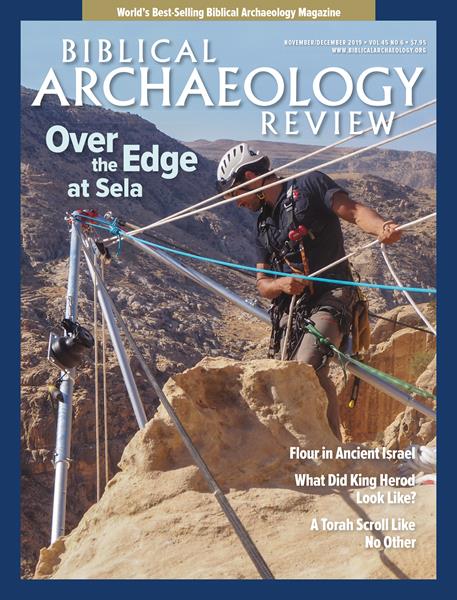Biblical Archaeology Review, November/December 2019

Features
In the sixth century B.C.E., the Neo-Babylonian king Nabonidus inscribed imperial propaganda on a cliff at Sela, a mountain fortress in modern Jordan. Assyriologist Rocío Da Riva goes to great heights to study this hard-to-reach inscription.
Ancient documents abound with obscure terminology. Even the names for such staples as wheat can evade modern attempts to match them with the wheat strains cultivated in the ancient world. Grain remains excavated at Tel Kedesh in northern Israel may finally shed light on some of the elusive wheats that appear in the famed Zenon Archive from the third century B.C.E.
What did King Herod look like? Join classical archaeologists Ralf Krumeich and Achim Lichtenberger as they search for the king’s portraits throughout the ancient Mediterranean world. Their discoveries illuminate aspects of Herod’s rule and how he chose to depict himself.
The oldest Torah manuscripts survive incomplete and barely legible. But not the scroll sheet acquired recently by the Library of Congress in Washington, D.C. Penned more than a millennium ago, this uniquely preserved parchment represents the oldest complete Torah scroll sheet totally legible by the naked eye. Explore the manuscript’s history and what makes it such a remarkable artifact.
